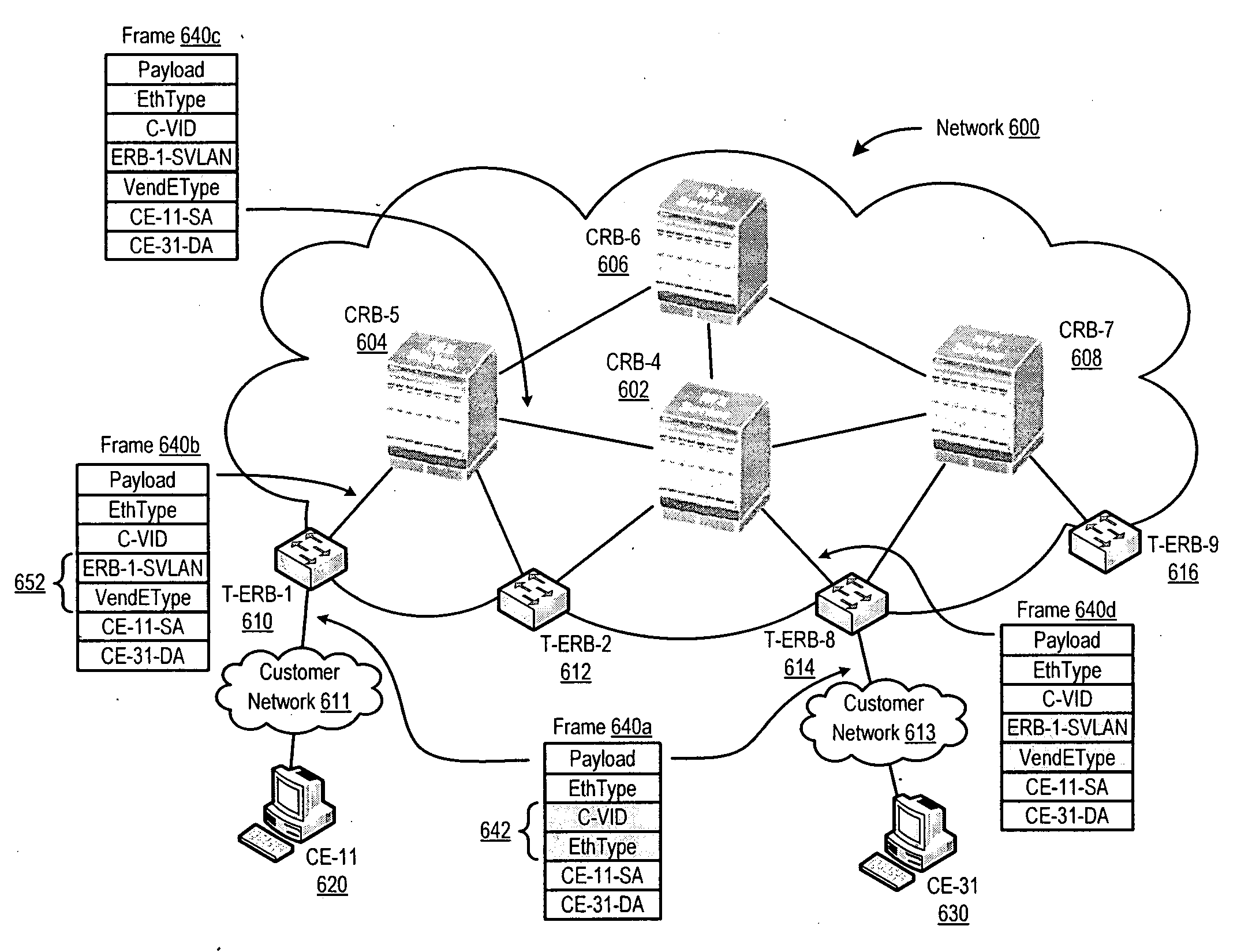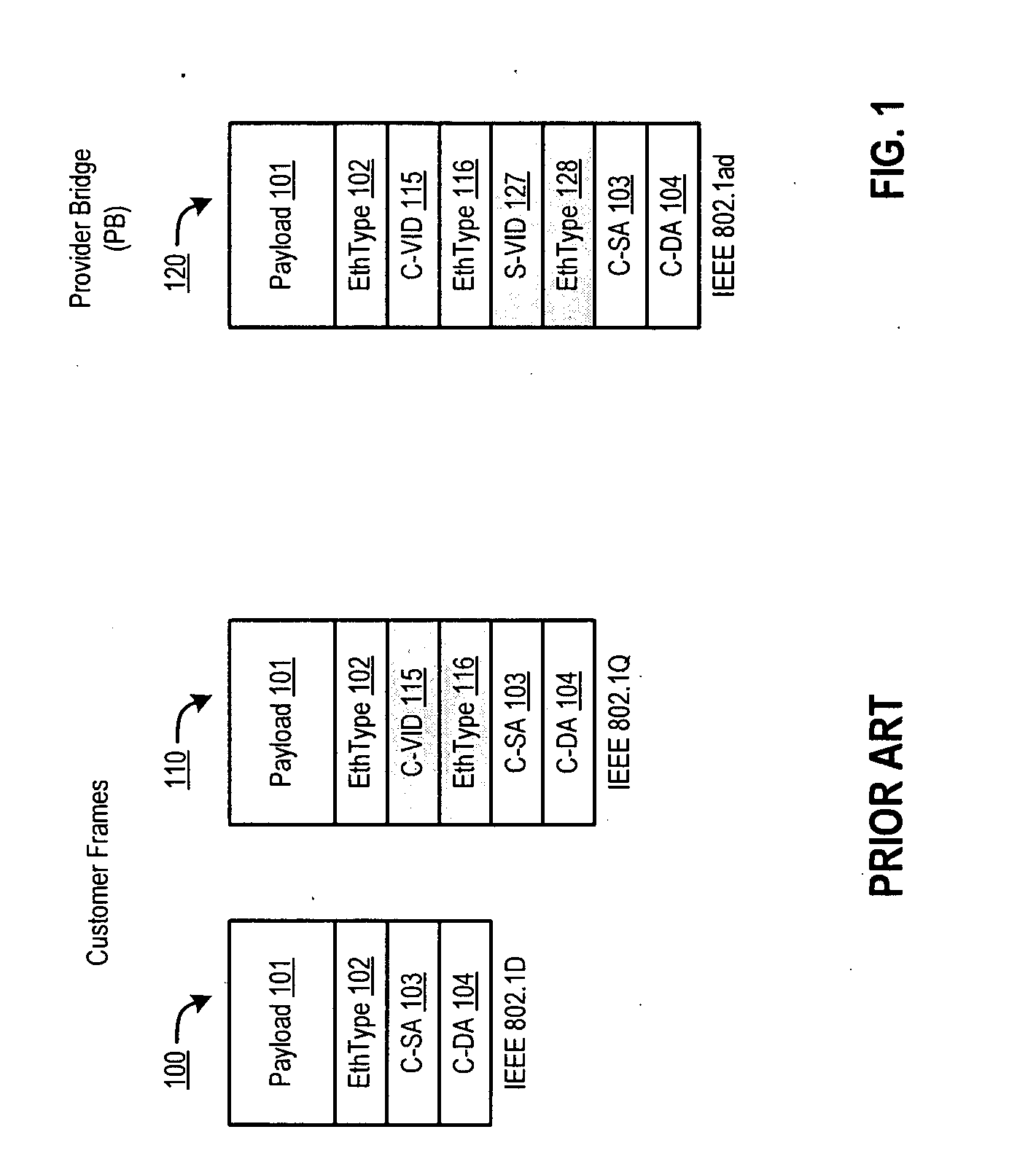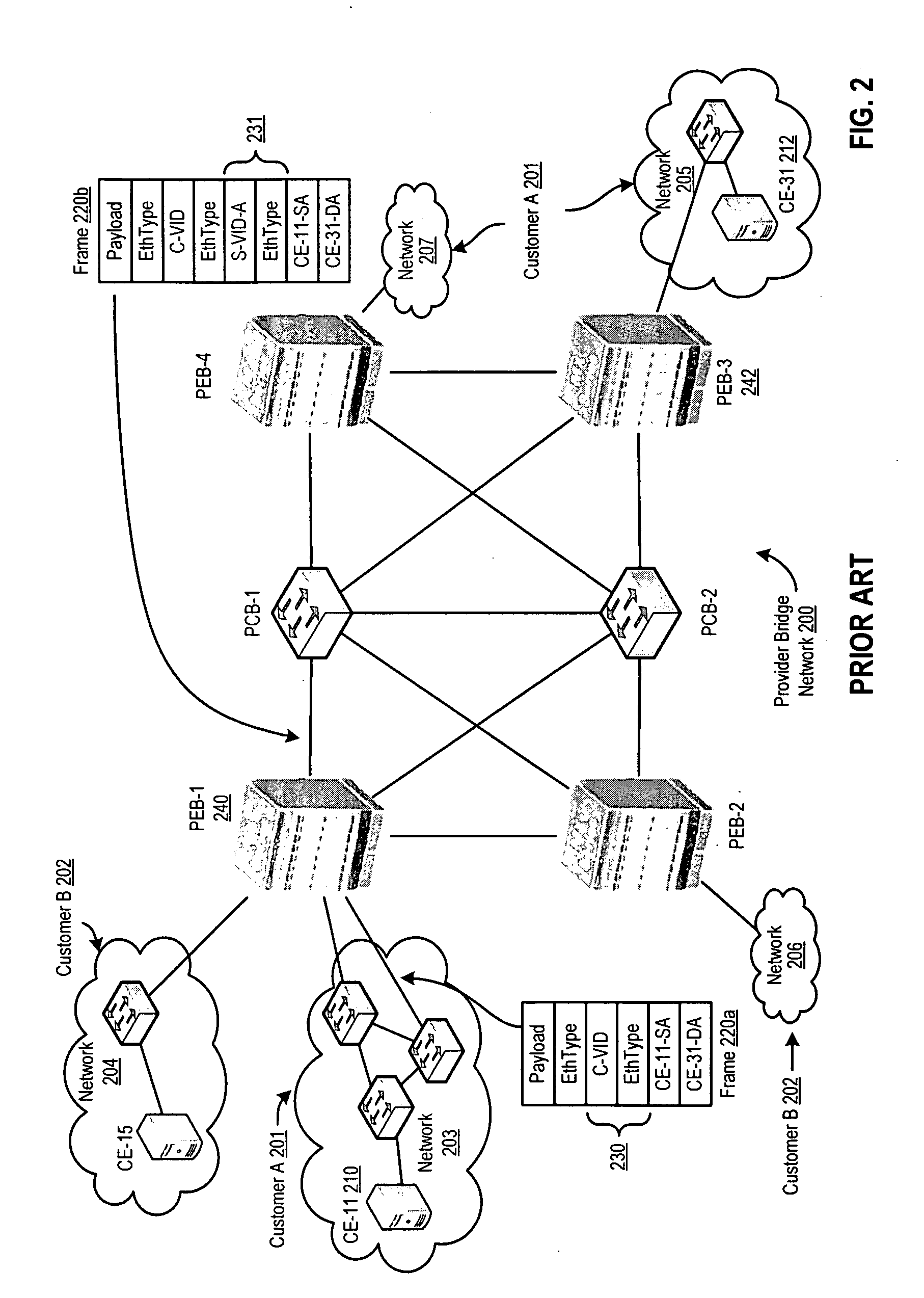Forwarding frames in a computer network using shortest path bridging
a computer network and frame forwarding technology, applied in the field of computer network forwarding frames using shortest path, can solve the problems of traffic flooding the network, 4096 identifiers available to specify different vlans, and frames that are forwarded through the network using spanning trees
- Summary
- Abstract
- Description
- Claims
- Application Information
AI Technical Summary
Benefits of technology
Problems solved by technology
Method used
Image
Examples
Embodiment Construction
[0035]While certain exemplary embodiments are described in detail and shown in the accompanying drawings, it is to be understood that such embodiments are merely illustrative of and not devised without departing from the basic scope thereof, which is determined by the claims that follow.
[0036]Although the following disclosure is discussed using terminology related to Ethernet links and various IEEE 802 standards, these are merely by way of example and illustration, and the scope of the present invention is not so limited, but extends to the fullest scope defined by the claims herein.
[0037]Although it is desirable for a network such as an IEEE 802.1Q network to be able to utilize all 4096 VLANs while providing shortest path bridging without MAC-in-MAC encapsulation, current bridging network solutions typically provide one of these desirable characteristics, but not both. Current network solutions provide full use of the 4096 VLANs inherent in IEEE 802.1Q networks by using stacked VLA...
PUM
 Login to View More
Login to View More Abstract
Description
Claims
Application Information
 Login to View More
Login to View More - R&D
- Intellectual Property
- Life Sciences
- Materials
- Tech Scout
- Unparalleled Data Quality
- Higher Quality Content
- 60% Fewer Hallucinations
Browse by: Latest US Patents, China's latest patents, Technical Efficacy Thesaurus, Application Domain, Technology Topic, Popular Technical Reports.
© 2025 PatSnap. All rights reserved.Legal|Privacy policy|Modern Slavery Act Transparency Statement|Sitemap|About US| Contact US: help@patsnap.com



